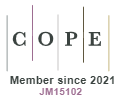Diversification of Public Expenditure on Health Care in the Member States of the European Union
DOI:
https://doi.org/10.18778/2391-6478.2.38.04Keywords:
health, public health expenditure per capita, public health expenditure as % of GDP, EU Member StatesAbstract
The purpose of the article/hypothesis: The aim of the article is to analyze the level of public (government) expenditure on health care in individual European Union countries. The research is exploratory, therefore no research hypothesis has been formulated.
Methodology: A comparative analysis of the level of public expenditure on health care in individual European Union countries was carried out. The analysis was based on the following measures from Eurostat databases: health care expenditure as the value of EUR per capita in 2011–2020 and health care expenditure as % of GDP in 2011–2020.
Results of the research: There are in individual countries of the European Union - which can be considered culturally and economically similar - significant differences in the level of public expenditure on health care. In the vast majority of European Union countries, an increase in expenditure on health care has been observed, but also these changes are very diverse in individual countries. This means that the distance between some countries (e.g. Poland), where changes are slower, and other European Union countries, is widening. When creating a ranking of European Union countries in terms of expenditure on health care, one can notice relatively stable positions of countries over the years 2011–2020, with the highest positions occupied by the countries of Western Europe, and the lower ones - by the countries of Central and Eastern Europe. The conducted analysis allows to conclude that Poland's position against the background of other European Union countries in terms of public expenditure on health care is weak. This applies not only to the comparison with the developed countries of Western Europe, but also to the comparison with the majority of Central and Eastern European countries.
Downloads
References
Białynicki-Birula P. (2007), Funkcjonowanie współczesnych modeli ochrony zdrowia, Biuletyn Ekonomiczny e-GAP nr 3/2007, https://depot.ceon.pl/bitstream/handle/123456789/3766/Wp%20yw%20zdrowia%20na%20kszta%20towanie.pdf?sequence=1 [Dostęp: 21.01.2023]
Google Scholar
Chuengsatiansup K. (2003), Spirituality and health: an initial proposal to incorporate spiritual health in health impact assessment, Environmental Impact Assessment Review, Vol. 23, Issue 1, s. 3–15.
Google Scholar
DOI: https://doi.org/10.1016/S0195-9255(02)00037-9
Diacon P.E., Maha L.G. (2015), The Relationship between Income, Consumption and GDP: A Time Series, Cross-Country Analysis, Procedia Economics and Finance, vol. 23.
Google Scholar
DOI: https://doi.org/10.1016/S2212-5671(15)00374-3
Fouad A.M., Waheed A., Gamal A., Amer S.A., Abdellah R.F., Shebl F.M. (2017), Effect of Chronic Diseases on Work Productivity: A Propensity Score Analysis, Journal of Occupational and Environmental Medicine, s. 480–485.
Google Scholar
DOI: https://doi.org/10.1097/JOM.0000000000000981
Lawrence R.J. (2014), Understanding Environmental Quality Through Quality of Life (QOL) Studies: in Reference Module in Earth Systems and Environmental Sciences, Elsevier.
Google Scholar
DOI: https://doi.org/10.1016/B978-0-12-409548-9.09139-9
McCartney G., Popham F., McMaster R., Cumbers A. (2019), Defining health and health inequalities, Public Health, vol. 172, s. 22–30.
Google Scholar
DOI: https://doi.org/10.1016/j.puhe.2019.03.023
Reszczyński J. (2021), U źródeł współczesnych modeli ochrony zdrowia, Studia ekonomiczne, Gospodarka Społeczeństwo Środowisko, nr 1(7).
Google Scholar
Sartorius N. (2006), The Meanings of Health and its Promotion, Croatian Medical Journal, s. 662–664.
Google Scholar
Scott A.J. (2021), The longevity society, The Lancet Healthy Longevity, Vol. 2, Issue 12.
Google Scholar
DOI: https://doi.org/10.1016/S2666-7568(21)00284-1
Topór-Mądry R., Gilis-Januszewska A., Kurkiewicz J., Pająk, A. (2002), Szacowanie potrzeb zdrowotnych, Uniwersyteckie Wydawnictwo Medyczne „VESALIUS”, Kraków.
Google Scholar
Wielicka K. (2014), Zarys funkcjonowania systemów opieki zdrowotnej w wybranych krajach Unii Europejskiej, Zeszyty Naukowe Politechniki Śląskiej. Seria: Organizacja i Zarządzanie.
Google Scholar
Skóbel B., Kocemba E., Rudka R. (2021), Nakłady na ochronę zdrowia w Polsce na tle innych państw OECD, Analizy Samorządowe nr 7, Związek Powiatów Polskich.
Google Scholar
Stankiewicz R. (2016), Krajowe systemy ochrony zdrowia a Unia Europejska. Przykład Polski, Wolters Kluwer Polska S.A.
Google Scholar
(www1) https://www.who.int/about/governance/constitution [Dostęp: 26.03.2023]
Google Scholar
(www2) https://www.who.int/about/governance/constitution [Dostęp: 21.01.2023]
Google Scholar
(www3) Government expenditure on health - https://ec.europa.eu/eurostat/statistics-explained/index.php?title=Government_expenditure_on_health#Expendi-ture_on_.27health.27 [Dostęp: 20.02.2023].
Google Scholar
(www4) https://ec.europa.eu/eurostat/statistics-explained/index.php?title=GDP_per_capita,_consumption_per_capita_and_price_level_indices [Dostęp: 24.03.2023]
Google Scholar
Downloads
Published
How to Cite
Issue
Section
License

This work is licensed under a Creative Commons Attribution-NonCommercial-NoDerivatives 4.0 International License.














